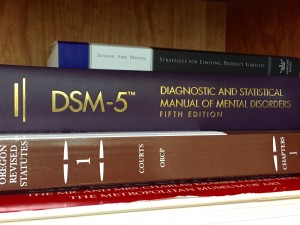Oregon Negligence Law Changed Significantly in 1987
Oregon is a state that recognizes a cause of action for direct negligence and vicarious liability. The lawyers at OlsonBrooksby frequently defend catastrophic personal injury, product liability, and aviation claims which contain causes of action based on direct negligence and vicarious liability.
First, we will discuss potential claims for direct negligence. An understanding of negligence law in Oregon requires a brief discussion of pre- and post-1987 common law decisions. Prior to 1987, Oregon generally held to a conventional approach to negligence cases, requiring the existence of a duty, a breach of that duty, causation, and damages. However, as a result of cases decided in the period around 1987, common law negligence in Oregon now depends on whether the defendant’s conduct unreasonably created a foreseeable risk to a protected interest of the kind of harm that befell the plaintiff.
A Direct Claim For Negligence Can Exist With Or Without The Fazzolari Special Relationship
The change from the strict adherence to the traditional common law elements of duty, breach, causation, and damages was a result of the Oregon appellate court’s perceived overuse of the cliché “duty” or “no duty.” Oregon courts, therefore, began to encourage juries and judges to decide each case on its own facts. Duty continues to play an affirmative role when the parties invoke a particular status, relationship, or standard of conduct beyond the standards generated by common law. This was the result of the so-called Fazzolari principle, which now governs negligence law in Oregon. See Fazzolari v. Portland School District 1J, 303 Or 1 (1987).
A special relationship is usually defined in the form of a fiduciary, contractual, or legal relationship such as guardianship. Typically, the school–student relationship has been deemed a special relationship as contemplated by Fazzolari.
Fazzolari typically requires a three-part test:
- Determine whether a particular status, relationship, or standard exists;
- If so, analyze that status, relationship, or standard to determine whether a “duty” beyond that of ordinary care exists;
- If such a standard, relationship, or status is not alleged, then analyze the case under principles of general negligence based on foreseeability of risk of harm.
For example, suppose an employee of a sports club is involved in an accident in which a club member is injured. Although there are no Oregon cases exactly on point, given the nature of the relationship between the employee and the club member, we do not believe that the member has a strong argument that a “special relationship” existed between himself and the sports club.
Let’s suppose further that the paperwork which was executed by the member consisted of the membership application and the general waiver of liability for use of the sports center facilities. Suppose there were no detailed contractual provisions denoting certain services, obligations, or protections provided to, or expected of, the member. Therefore, there was no fiduciary relationship. Under these facts, a special relationship did not exist between the member and the sports club that typically would have invoked a duty of care to the member beyond that of the ordinary care extended to a business invitee.
Although courts have often found that schools are in a special relationship with their students, we do not believe that type of relationship is comparable to the sports club and its member. This is because of the fundamentally voluntary nature of the sports club membership (without regard to the statutory abolition of assumption of the risk discussed below). Moreover, we should assume that the sports club member was not a third-party beneficiary of any contract that existed between the sports club and a government agency or other third party.
For these reasons, we see nothing that would clearly take this hypothetical case out of the conventional principles of negligence and create a special relationship requiring examination on its own facts.
Although a special relationship may take a case out of the typical “duty” or “no duty” scenario, the harm to the protected interest of the putative plaintiff must still be reasonably foreseeable. Therefore, given that, in this hypothetical “sports club / member” relationship scenario, we are operating under the principles of ordinary negligence, the appropriate standard in this case is that an organization’s conduct must not unreasonably create a foreseeable risk of harm to others.
Direct negligence claims are sometimes referred to as causes of action based on negligent hiring, negligent training, negligent supervision, or negligent retention. The organization may be directly liable for negligence claims based on hiring, retention, supervision, or training if (1) it places a dangerous person in a position that poses an unreasonable risk of harm to others, and if (2) the organization knew of the danger or could have discovered the danger through reasonable investigation.
In the event there were other facts such as the following, it may support one or more of the sports club member’s claims for direct negligence:
- Sports club failed to screen employees, including those that may have needed specialized training, i.e., lifeguards.
- There is no documentation that sports club ever trained its employees, let alone the employee or employees who were involved with member’s hypothetical accident.
- Employees displayed an attitude of disinterest, which may have affected their performance of safety related duties.
- Sports club failed to maintain adequate documentation of employee performance in employee personnel files.
- Employees had ambiguous or uncertain understanding of the proper safety protocol.
- Sports club has a history of failing to comply with its own club procedures, resulting in similar prior injuries.
- Sports club employee(s) admitted they were lazy, did not like their jobs, or were apathetic toward proper performance.
- Sports club failed to develop adequate safety procedures, i.e., requiring employees or members to obtain and renew any type of skill or safety certification.
- Sports club employee was not properly supervised, lacked familiarity with sports clubs rules and procedures, and was less experienced at a given task, i.e., weight training safety spotting, than many of the members.
In summary, if sufficient evidence exists of the sports club’s failure to properly hire, train, or supervise, or retain, the club would have an uphill battle defending against a direct negligence claim.
Vicarious Liability
Oregon is a vicarious liability state. If, as in the example above, the sports club member made a claim that the sports club is vicariously liable for his alleged injury, he would argue that sports club, as the “master” of its employee or “servant,” is liable for its employee’s negligence in failing to protect what was a foreseeable interest in the kind of harm that befell the member. Specifically, the member would allege that, due to the employee’s negligence in failing to supervise, the member was not properly protected from the injury of the type that befell him, and that the accident was foreseeable and preventable. The employee must have been acting within the course and scope of his employment and have been motivated, in part, to serve the interests of the “master,” i.e., the sports club.
In a claim for vicarious liability, as discussed in more detail below, the sports club need not have played any role in the negligence itself, so long as it controls the actions of the negligent employee and the employee’s actions were performed within the course and scope of employment and performed, at least in part, to benefit the employer.
Regarding course and scope, an employee is acting within the course and scope of employment if three factors are present:
- The employee’s actions at the time of the accident substantially occurred within the time and space limits authorized by the employment;
- The employee was motivated, at least in part, by a purpose to serve the employer;
- The act is of a kind that the employee was hired to perform.
Chesterman v. Barmon, 305 Or 439, 442 (1988).
All three factors must be present for vicariously liability to withstand a challenge.
In vicarious liability cases, the best defense is that the employee committed an intentional act that fell outside the course and scope of his employment. Nearly all the published cases where courts have held that the employee was acting outside the course and scope involve intentional acts of force committed by security guards, bouncers, bodyguards, etc.
Foreseeability Issues
Reasonable foreseeability is still a necessary aspect of negligence, in any form. In the example above, where a sports club member is injured, depending on the nature of the injury, the sports club would need to consider the specific facts that gave rise to the claim and whether or not a jury would conclude that the injury was reasonably foreseeable. From a defense perspective, arguing that reasonable foreseeability does not exist is an uphill battle in most cases. Oregon law generally finds that an intervening act negates fault only in extreme cases, such as those involving criminals. For example, in one of the seminal Oregon foreseeability cases, Buchler v. Oregon Corrections Division, 316 Or 499 (1993), an en banc decision, a prisoner on a work crew stole the prison van in which the guard had left the keys, drove to his mother’s home, stole a firearm, and later used it to kill someone in the van. 316 Or at 502.
The court noted that, while the defendant had a history of temper problems, there was nothing in his background that would ever suggest he would commit such a crime. Id. at 507. The court ultimately held that an intervening criminal instrumentality caused the harm and created the risk. Id. at 510-11. The court explained that, although “it is generally foreseeable that criminals may commit crimes and that prisoners may escape and engage in criminal activity while at large, that level of foreseeability does not make the criminal’s acts the legal responsibility of everyone who may have contributed in some way to the criminal opportunity.” Id. at 511.
Conclusion
Product liability, catastrophic personal injury, and aviation claims, all of which Olson Brooksby frequently defend, require a clear understanding of which claims contain causes of action based on direct negligence and vicarious liability, and more importantly, what the elements are, so that proper defenses can be raised, and an investigation and discovery plan can be drafted, to attempt to defeat the claims.

